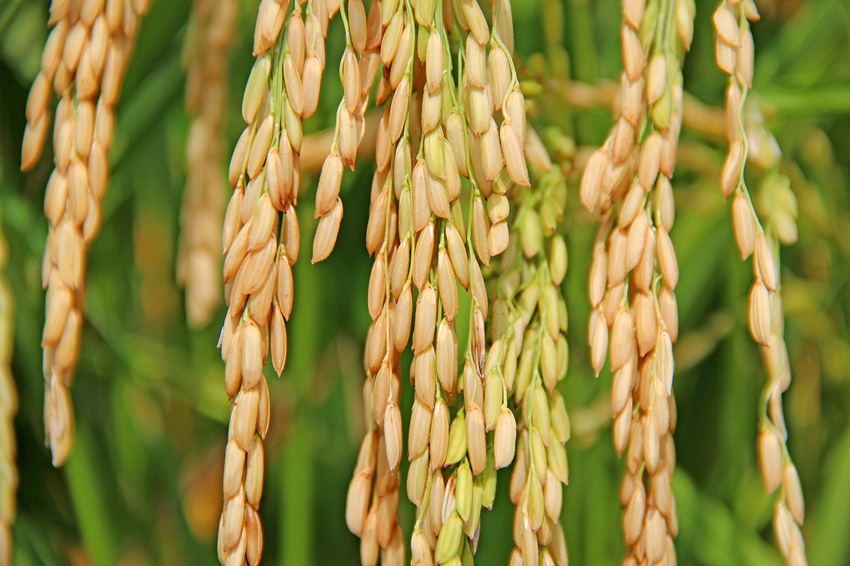
In 2016, for very good reasons, dicamba got the vast majority of attention for damaging off-target crops. But there were other herbicides that proved volatile, including clomazone. And, fair warning, it could happen again in 2017.
“Last May 10, Ford Baldwin had an article in Delta Farm Press about traveling through Arkansas and seeing more whitening from off-target clomazone than he’d seen in years,” says Don Johnson, of FMC. “Much of it was around the Walnut Ridge area.”
It turns out there is an interesting history behind what Baldwin observed.
Looking back
In 1986, FMC got the first registered formulation – a 4EC form, used mainly in the Midwest at low-use rates for velvetleaf control in soybeans. “At that point,” says Johnson, “the product had … volatility movement and there were extremely large buffer zones tagged to it. They had to incorporate it and couldn’t surface apply.
“We began using some it in the South and in the early 1990s got the cotton registration for the product. It really held the market then for morning-glory and grass control in cotton. We were applying a lot of it broadcast but also behind the planter. Because of the 4EC volatility issues, we ended up ‘stewardshipping’ the product, giving away spray tips and recommending drift retardants be put in and buffer zones used.”
At the time, Johnson was working in Louisiana. He remembers “whole towns turning white from (the 4EC form) being applied behind the planter. We were going to lose that product if we didn’t come up with a solution.”
In 1996, FMC developed Command 3ME. “We looked at 100 different formulations of Command trying to find one that reduced volatility. When we came up with one, it was ideal and reduced volatility drastically.”
By the late 1990s, “we began looking at it in rice production, something that was already being done in Brazil. We got the rice label in 2001 and it was used a lot more in rice than in cotton or soybeans. Because it wasn’t as volatile, we were able to reduce buffer zones, we were able to apply and not incorporate it. It’s now used on a majority of rice acres and is the main pre- herbicide used in conventional and Clearfield.”
Expired patent
The patent expired for the micro-encapsulated formulation in 2014. Other companies are now bringing generic versions into the marketplace.
“When Willowood brought their product to market a couple of years ago, we ran our own volatility work. … We did two in-house studies and one showed Willowood Clomazone reduced volatility from the 4EC formulation only 12.5 percent. The second study showed Willowood Clomazone reduced it 8.1 percent. Meanwhile, Command 3ME reduced volatility compared to the 4EC 83.6 percent and 82.8 percent.
“Everyone said this was biased information because FMC generated it.”
To help put such claims aside, at the beginning of 2016 FMC went to Battelle Memorial Institute and had a third party conduct the same tests. Their results came back with Willowood Clomazone at 91.8 percent volatility of 4EC with FMC’s Command at 8.8 percent.
Shortly after, Jason Norsworthy, University of Arkansas weed scientist, got involved.
“Last year, we saw more clomazone damage in the state than we’d seen in previous years,” says Norsworthy. “I’m not going to say it was volatility or physical drift -- but in terms of off-target movement of clomazone, there was more.”
Clomazone has historically been sold as a microencapsulated formulation under the tradename Command 3ME. “Today, there are generic clomazone formulations such as Willowood Clomazone 3ME and Civic 3ME,” says Norsworthy. “RiceCo also has a mixture of clomazone plus pendimethalin marketed as RiceOne. If you go back to the early 1990s when we were evaluating clomazone in cotton, it was a 4EC formulation that quickly shifted to a 3ME. The 4EC is a very volatile form of clomazone that was never publically evaluated in rice.
“Instead, FMC developed Command 3ME version which had much lower volatility. Essentially, it allowed for clomazone, or Command 3ME, to be effectively used in rice. Today, clomazone is a standard -- approximately 95 percent of Arkansas’ rice acres receive a clomazone application at, or near, planting. For the past several years, that meant spraying Command 3ME.”
Now that the patent has expired, there are multiple producers of generic clomazone. “With recent increases in off-target movement, FMC had some third-party research conducted to determine if the generic clomazone formulations were comparable to Command 3ME in volatility. That research determined the generics were more volatile than Command 3ME, even though all clomazone products available in rice today are micro-encapsulated. These findings led to the speculation that not all micro-encapsulations are comparable or produced in a similar manner.”
University testing
John Hatten, a PhD chemist with the University of Arkansas, worked with Norsworthy “to test Civic, Willowood Clomazone, and Command 3ME products relative to the older clomazone 4EC formulation. The findings were very comparable to FMC’s third-party results: Civic and Willowood were several orders of magnitude more volatile than Command 3ME, although less volatile than the 4EC formulation.”
These results were shared with Arkansas State Plant Board in 2016. Norsworthy expects “they will revisit the issue this summer, potentially allowing for additional data to be collected if deemed necessary.
“It’s always good to use the lowest-risk product when there is potential for damaging neighbor’s crops or vegetation. It does not make sense to come to market with products that have inherent high risks associated with them. Regardless of which form is being applied in 2017, applicators need to be reminded that clomazone can injure adjacent vegetation and care should be taken when applying clomazone-containing products.”
About the Author(s)
You May Also Like




